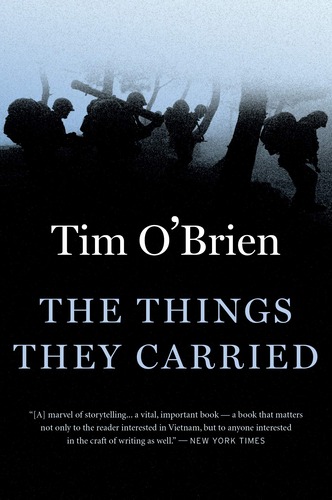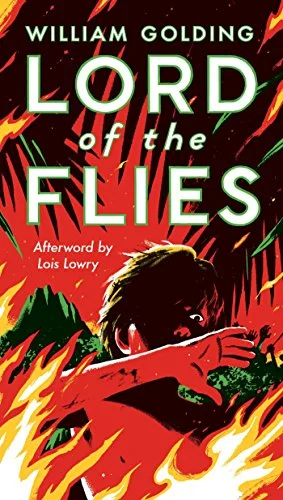Tim O’Brien’s The Things They Carried is often hailed as one of the most profound literary examinations of the Vietnam War, but its true brilliance lies not only in its war imagery or fragmented structure—it resides in the recurring use of storytelling as a means of psychological survival. More than a narrative technique, storytelling in O’Brien’s work becomes a way to make sense of chaos, preserve memory, process grief, and redefine truth.
Within the pages of this novel-in-stories, O’Brien does not simply recount wartime experiences; he reimagines them, repeats them, reshapes them. Each retelling becomes a lifeline, allowing both narrator and characters to carry the emotional weight of trauma. For the soldiers in The Things They Carried, and for O’Brien himself, storytelling is a vital form of endurance.
Memory and Meaning: Reconstructing the Past
One of the key functions of storytelling in the book is its ability to reconstruct events in a way that preserves their emotional truth, if not always their factual one. O’Brien challenges the boundary between fiction and reality by blending imagined elements with lived experience. He famously claims that “story-truth is truer sometimes than happening-truth.”
This tension highlights how memory operates—not as a static recording but as a fluid, subjective experience. Soldiers cannot simply recall what happened; they must reinterpret what it meant. Through storytelling, O’Brien reclaims agency over events that once stripped him of control. The act of telling becomes a reconstruction of identity and an assertion that the past, though painful, can be shaped into something meaningful.
Coping with Trauma: Giving Shape to the Unspeakable
The Vietnam War, as depicted in The Things They Carried, is not only a battlefield of bullets and booby traps but a psychological war zone. Many of the traumas faced by O’Brien and his fellow soldiers defy logic or expression. How does one explain the absurdity of watching a friend die from a random sniper shot, or the shame of killing a man in close combat?
Storytelling steps in where language would otherwise fail. It becomes a method of containment—a way to give form to formless pain. For instance, in the chapter “The Man I Killed,” O’Brien repeatedly describes the physical features of the Vietnamese soldier he shot, circling around guilt and grief without confronting them directly. The repetition, imagery, and imagined biography of the dead man serve not as factual testimony but as an emotional exorcism.
In this way, storytelling helps the narrator (and, by extension, the reader) sit with pain rather than escape it. It offers a structure for processing trauma—by reimagining it, rephrasing it, and, crucially, sharing it.
Preserving the Dead: Memory as Immortality
Another major role storytelling plays is the preservation of those who have been lost. In war, death is constant and often meaningless. But in O’Brien’s hands, memory becomes resistance to oblivion. Characters like Kiowa, Ted Lavender, and Curt Lemon may die in the narrative, but they live again in the telling.
This idea is most poignantly illustrated in the chapter “The Lives of the Dead.” Here, O’Brien recounts the story of Linda, a childhood friend who died of cancer. Her death, experienced before the war, introduces the idea that storytelling can revive the dead—not physically, but emotionally. “Stories can save us,” O’Brien writes. “The thing about a story is that you dream it as you tell it, hoping that others might then dream along with you.”
The implication is powerful: by keeping someone’s story alive, we keep a part of them alive as well. In a war where names vanish from dog tags and bodies are left in rice paddies, storytelling becomes a form of defiance against erasure.
Building Connection: Shared Understanding in Isolation
The soldiers in The Things They Carried often find themselves isolated—not just physically in the jungles of Vietnam, but emotionally. Surrounded by fear and death, they struggle to articulate their inner experiences. Storytelling becomes a bridge between those internal landscapes and the shared space of the platoon.
Take, for instance, the moment when Rat Kiley tells a story about his friend Curt Lemon’s death. He embellishes, exaggerates, and even lies—but in doing so, he communicates the depth of his grief. His fellow soldiers may know he’s not being “truthful” in the journalistic sense, but they understand that he’s being honest in another way. His story captures the emotional reality of loss better than a report ever could.
This shared storytelling creates community. It becomes a ritual through which soldiers connect, grieve, and find brief moments of relief. The act of telling and listening becomes as important as the content itself—a small form of emotional intimacy in a setting where such things are rarely available.
Disrupting Narrative Expectations: A Challenge to the Reader
O’Brien deliberately uses storytelling not just to comfort, but to provoke. His metafictional style—constantly drawing attention to the act of writing—challenges the reader to question their own relationship to narrative and truth. Chapters contradict one another. Stories are told, then denied, then retold with different details. The reader is never allowed to settle into a single version of reality.
This narrative instability reflects the mental landscape of trauma. Just as a soldier’s memories shift and fracture under pressure, so too does the text. But more than that, it underscores how storytelling itself is an evolving act of survival. The story that helped you yesterday may not serve the same purpose tomorrow. It must be reshaped, retold, reexamined.
In this sense, O’Brien’s narrative structure is itself a survival strategy—one that resists neat conclusions or moral clarity. It mirrors the ongoing process of living with trauma rather than “moving past” it.
Healing Beyond the Battlefield
Though rooted in the Vietnam War, The Things They Carried speaks to broader truths about storytelling as survival beyond combat. Many readers connect with O’Brien’s work not because they’ve fought in war, but because they recognize the human need to shape experience through narrative.
Whether grieving a loss, confronting injustice, or navigating emotional turmoil, people turn to stories to make sense of the senseless. O’Brien’s blend of fiction and memoir invites readers to do the same—not to find clean answers, but to better inhabit their questions.
Storytelling, then, becomes a universal salve. It doesn’t eliminate pain, but it gives it shape. And with shape comes understanding. With understanding, endurance.
The Necessary Fiction of Survival
In The Things They Carried, Tim O’Brien doesn’t just tell stories—he explores why stories matter. In a world fractured by violence and uncertainty, storytelling becomes a necessary fiction, a way to carry the unbearable. For the soldiers in his book, and for the author himself, stories are not escapes from reality but means of engaging with its most difficult aspects.
They are not always “true” in the conventional sense, but they are real in a deeper, emotional one. In the telling, there is healing. In the retelling, there is survival.
And in the act of listening—really listening—there is, perhaps, the beginning of peace.


